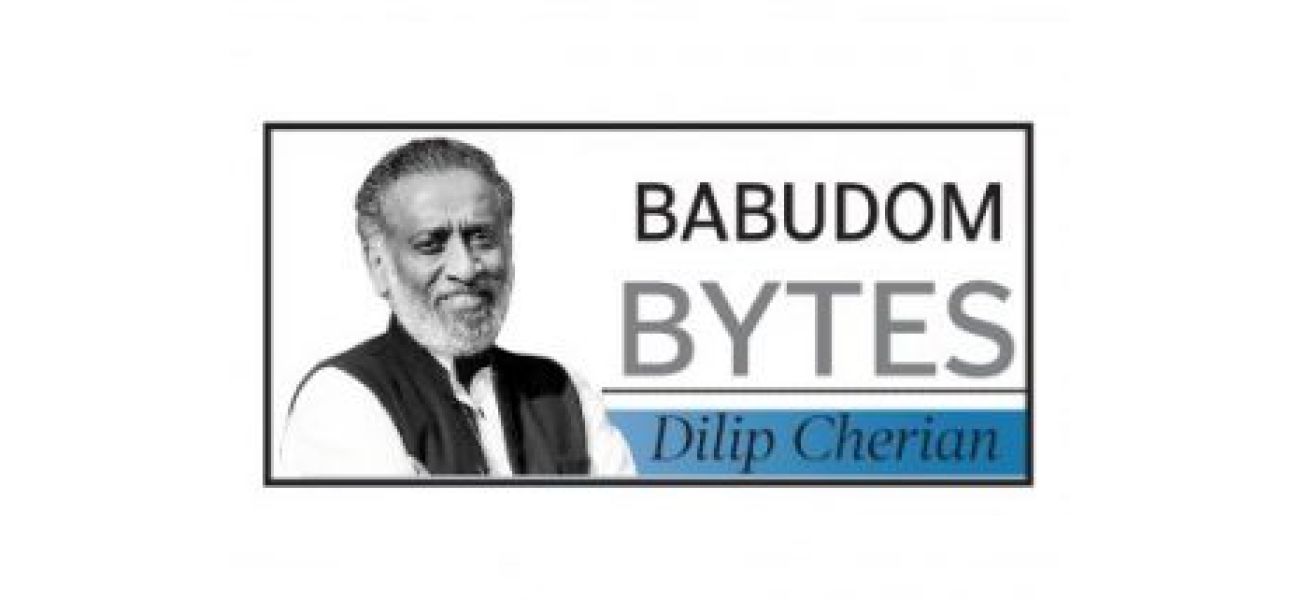Predicting outcomes and planning procedures within a rigid bureaucratic system to ensure efficient decision-making. #bureaucracy #efficiency
India and Pakistan have stopped fighting, but with a history of aggression, India has prepared by building bunkers near the LoC in Jammu and Kashmir.
May 17th 2025.

The recent tensions between India and Pakistan have come to a temporary halt, but when your neighbor has a habit of throwing more than just cricket metaphors across the fence, you can never be too careful. Thankfully, India has a plan in place. And it's not just about missiles and high-level meetings, it's also about bunkers.
These underground shelters are located throughout Jammu and Kashmir, especially near the Line of Control. They were built long before the current tensions escalated, and they serve as not just military preparations, but also as civilian protection. It's a rare win for bureaucratic foresight.
While these bunkers may not be of much help in the Poonch region, as was discovered during the recent battle, government officials say that civilians living along the border now have a safe place to run to when the skies turn chaotic. These are not luxurious basements, but rather reinforced, well-stocked life pods. And thanks to regular safety drills, people are well-informed about what to do when the sirens sound.
But these bunkers are not just for conventional shelling. India also has strategic shelters, similar to those built during the Cold War, that are designed to withstand a nuclear strike. It's not something that is boasted about over dinner, but it's exactly the kind of infrastructure that you want in place, quietly waiting in the wings.
The key takeaway here is that sometimes security doesn't come in the form of fighter jets and high-level talks. Sometimes, it's as simple as a reinforced concrete room with supplies, a lock, and a plan. In a world where chaos seems just one bad headline away, these bunkers serve as a sobering reminder that true defense starts underground, and it's not just for the military anymore.
In the world of civil servants, there is a constant drive to reach top administrative positions, but there is also a sense of camaraderie among officers from the same batch. This is evident in the subtle competition between the 1989 and 1991 Indian Administrative Service (IAS) batches.
The 1989 batch, not content with just holding high office, strategically positioned themselves in some of the most critical areas in the country, such as Delhi and Jammu & Kashmir. Atal Dulloo manages the sensitive terrain of J&K, while Dharmendra navigates the complex bureaucratic landscape of Delhi. In addition, officers from this batch also hold key positions in states like Gujarat, Chhattisgarh, Madhya Pradesh, Bihar, and Karnataka. It's clear that they didn't just come to play, they came to take control.
On the other hand, the 1991 batch may not have the same high-profile postings, but they have spread themselves across seven states, making them an administrative powerhouse. From the polarized politics of Tamil Nadu and West Bengal, to the election buzz in Kerala and the strategic regions of Arunachal and Nagaland, these officers are navigating challenging terrain, both politically and geographically.
So, who comes out on top in this batch rivalry? The 1989 batch has an undeniable strategic advantage, managing crucial Union Territories and border states with high-stakes implications. However, the 1991 batch has a wider reach, overseeing a larger slice of India's complex federal system.
One thing is clear - governance in India is not just about policies, it's also about positioning. And sometimes, a little friendly competition between batches is necessary to keep the bureaucratic engine running smoothly.
The recent case of suspended IAS officer N Prasanth in Kerala serves as a prime example of how not to inspire public confidence. The state government's decision to extend his suspension until October 31, 2025, is not only unusual, but also shrouded in secrecy.
Here's the twist - there were two meetings of the suspension review committee within a span of two weeks. The first meeting, chaired by the outgoing Chief Secretary Sarada Muraleedharan, reportedly recommended lifting the suspension. However, the second meeting, chaired by the new CS A Jayathilak, who is known to have a strained relationship with Prasanth, recommended extending the suspension. It's not hard to guess which recommendation the final government order conveniently ignored.
In such cases, All India Services rules state that suspensions longer than six months require the approval of the Centre. However, in Prasanth's case, there has been no word on whether the Union government was consulted or gave its approval. This is a grave matter. Ignoring statutory requirements is not a simple procedural mistake, it's like playing a game of bureaucratic roulette.
At best, this is a situation of procedural ambiguity. But at worst, it smells like a case of personal vendetta dressed up as governance. While civil servants are not above the law, the system that governs them should also adhere to the rules. If rules are to mean anything, the state must follow due process. Currently, it seems like the government in Kerala has chosen selective memory and silence instead.
These underground shelters are located throughout Jammu and Kashmir, especially near the Line of Control. They were built long before the current tensions escalated, and they serve as not just military preparations, but also as civilian protection. It's a rare win for bureaucratic foresight.
While these bunkers may not be of much help in the Poonch region, as was discovered during the recent battle, government officials say that civilians living along the border now have a safe place to run to when the skies turn chaotic. These are not luxurious basements, but rather reinforced, well-stocked life pods. And thanks to regular safety drills, people are well-informed about what to do when the sirens sound.
But these bunkers are not just for conventional shelling. India also has strategic shelters, similar to those built during the Cold War, that are designed to withstand a nuclear strike. It's not something that is boasted about over dinner, but it's exactly the kind of infrastructure that you want in place, quietly waiting in the wings.
The key takeaway here is that sometimes security doesn't come in the form of fighter jets and high-level talks. Sometimes, it's as simple as a reinforced concrete room with supplies, a lock, and a plan. In a world where chaos seems just one bad headline away, these bunkers serve as a sobering reminder that true defense starts underground, and it's not just for the military anymore.
In the world of civil servants, there is a constant drive to reach top administrative positions, but there is also a sense of camaraderie among officers from the same batch. This is evident in the subtle competition between the 1989 and 1991 Indian Administrative Service (IAS) batches.
The 1989 batch, not content with just holding high office, strategically positioned themselves in some of the most critical areas in the country, such as Delhi and Jammu & Kashmir. Atal Dulloo manages the sensitive terrain of J&K, while Dharmendra navigates the complex bureaucratic landscape of Delhi. In addition, officers from this batch also hold key positions in states like Gujarat, Chhattisgarh, Madhya Pradesh, Bihar, and Karnataka. It's clear that they didn't just come to play, they came to take control.
On the other hand, the 1991 batch may not have the same high-profile postings, but they have spread themselves across seven states, making them an administrative powerhouse. From the polarized politics of Tamil Nadu and West Bengal, to the election buzz in Kerala and the strategic regions of Arunachal and Nagaland, these officers are navigating challenging terrain, both politically and geographically.
So, who comes out on top in this batch rivalry? The 1989 batch has an undeniable strategic advantage, managing crucial Union Territories and border states with high-stakes implications. However, the 1991 batch has a wider reach, overseeing a larger slice of India's complex federal system.
One thing is clear - governance in India is not just about policies, it's also about positioning. And sometimes, a little friendly competition between batches is necessary to keep the bureaucratic engine running smoothly.
The recent case of suspended IAS officer N Prasanth in Kerala serves as a prime example of how not to inspire public confidence. The state government's decision to extend his suspension until October 31, 2025, is not only unusual, but also shrouded in secrecy.
Here's the twist - there were two meetings of the suspension review committee within a span of two weeks. The first meeting, chaired by the outgoing Chief Secretary Sarada Muraleedharan, reportedly recommended lifting the suspension. However, the second meeting, chaired by the new CS A Jayathilak, who is known to have a strained relationship with Prasanth, recommended extending the suspension. It's not hard to guess which recommendation the final government order conveniently ignored.
In such cases, All India Services rules state that suspensions longer than six months require the approval of the Centre. However, in Prasanth's case, there has been no word on whether the Union government was consulted or gave its approval. This is a grave matter. Ignoring statutory requirements is not a simple procedural mistake, it's like playing a game of bureaucratic roulette.
At best, this is a situation of procedural ambiguity. But at worst, it smells like a case of personal vendetta dressed up as governance. While civil servants are not above the law, the system that governs them should also adhere to the rules. If rules are to mean anything, the state must follow due process. Currently, it seems like the government in Kerala has chosen selective memory and silence instead.
[This article has been trending online recently and has been generated with AI. Your feed is customized.]
[Generative AI is experimental.]
0
0
Submit Comment





